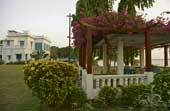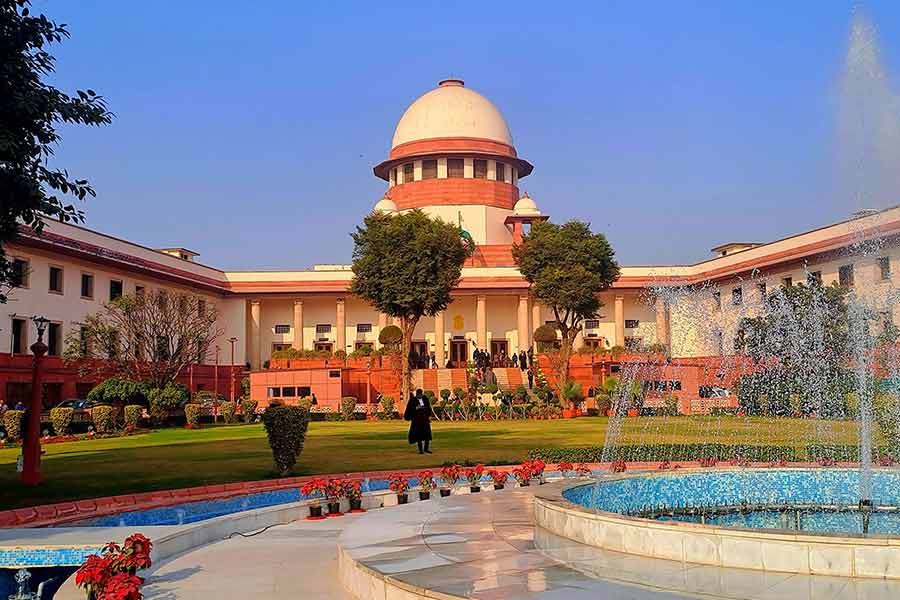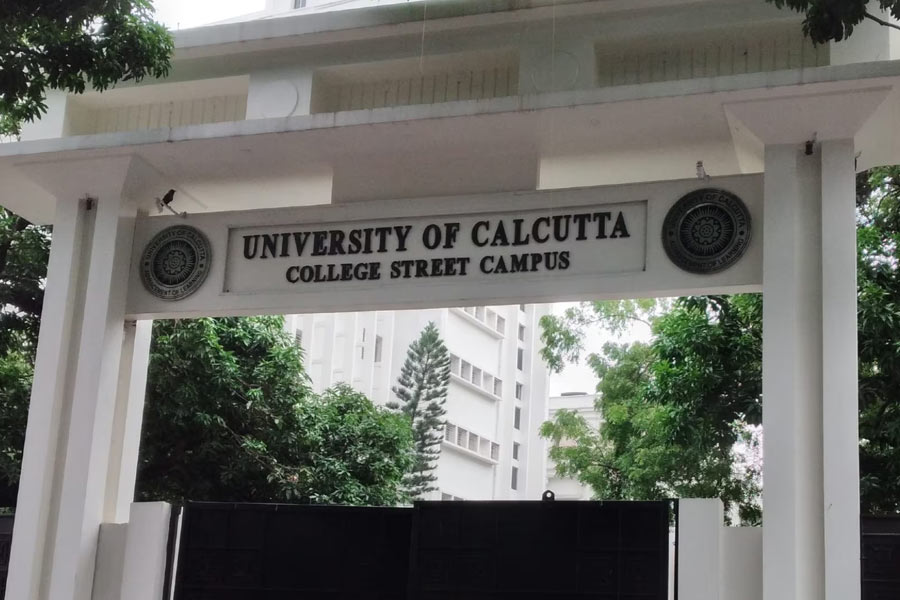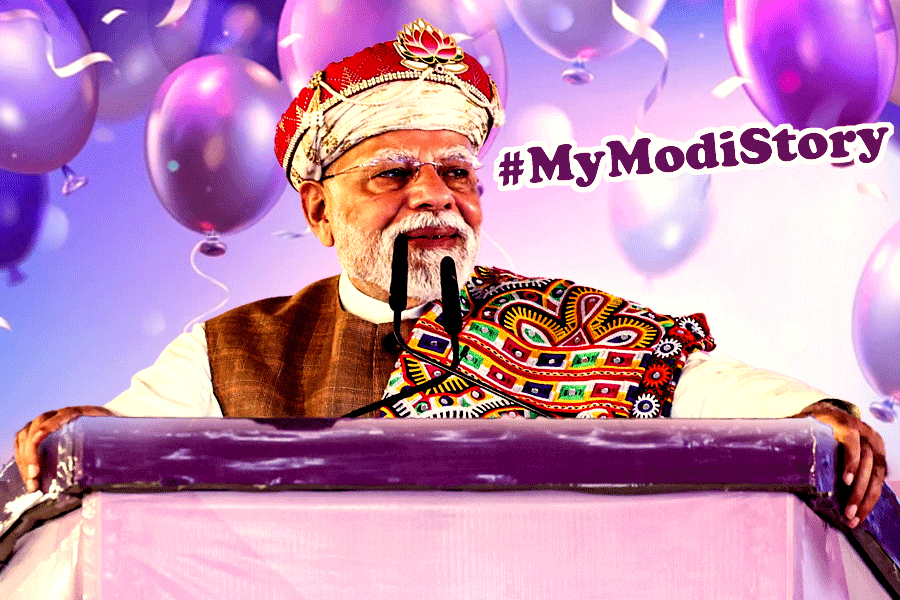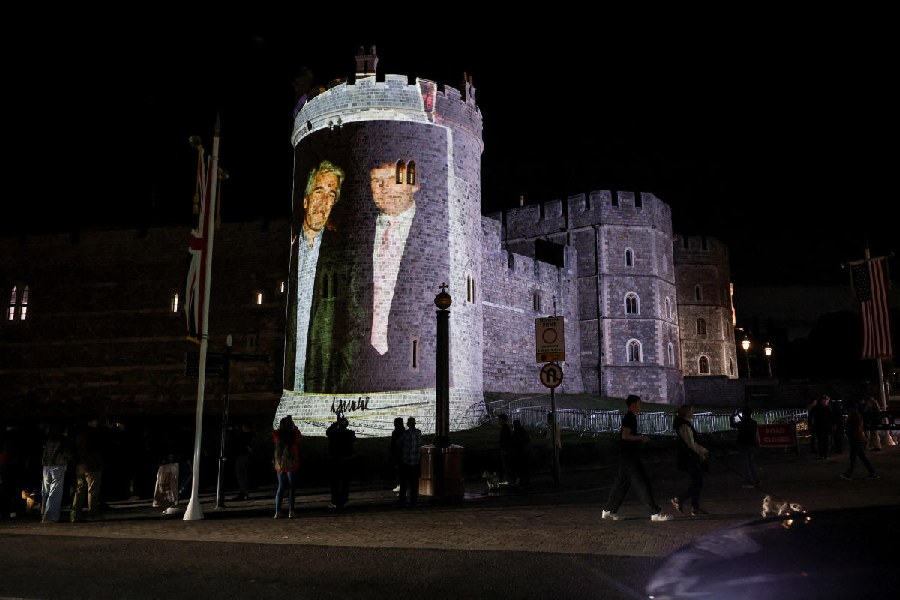 |
| Saheb Kuthi on the Hooghly riverfront and (below) a gateway to the river. Pictures by Pabitra Das |
 |
Renoir’s film The River records how Europeans who opted to work in jute mills really lived it up.
Ephraim Jonah wrote about life in Agarpara Jute Mill, where he once lived, in a recent email from Israel. “My late father, Sassoon Jacob Jonah, was born in Calcutta in 1903, the third of six sons and a daughter. He was the first sibling to be born in Calcutta. His two older brothers were born in Bombay, where his father, my grandfather had married. My grandfather worked for the Sassoons in Bombay but was transferred to the Calcutta office in 1903 to open and head a new department.
“My father (and all his brothers) passed his Senior Cambridge at St Xavier’s College and he also went to work for ED Sassoon. But, soon after Agarpara Jute Mill started, he was approached by BNE (BN Elias — a Jewish tycoon) to work for him as a department head in the jute mill, and he accepted. The first manager of the mill was a Mr Masterson, a Scotsman.
“By the time my father married in 1933, there were about six or seven young Jewish men working there as department heads. The next manager was Maurice Arakie, a bachelor. After serving a few years, he became sick and died soon after. While he was sick my father took over his duties and in 1945 officially became the manager, and we moved into the manager’s bungalow.
“As the mill expanded, living quarters were built south of the mill, but within walking distance of it. Eventually there were four buildings. Three had six apartments each and a smaller one had three. These residences were for department heads and assistants. One or two apartments housed bachelors; all the others were occupied by families with children. These are in addition to the manager’s bungalow and a smaller bungalow where a Mr Ghosh resided with his family. Before these were built, the few Jewish employees lived in what became the manager’s bungalow. All the residents were Jews, with the exception of Mr Ghosh, and the mill doctor, Mr Parry, a Muslim who had a Jewish wife.
“NTC (National Tobacco Company) was on the other side of BT Road, and there too most of the senior employees were Jews. There was one Anglo-Indian who held a very senior position. For recreation, a club house was built where there was a billiard room and a large hall with a ping-pong table. The hall was used also for dances, including one every New Year’s Eve which, during the war, was used frequently by American GI’s stationed in Titagarh.
“Just outside the club house was a large cemented area marked out as a badminton court, where we youngsters skated and, on winter evenings, played badminton. There were also two grass tennis courts adjacent to the badminton court. Just north of the club house was a large tank where we swam. All these facilities were available to NTC employees as well. Of course most of the residents had relatives among the Jewish community of Calcutta, and quite often on weekends these relatives would visit Agarpara and make use of the recreational facilities. About once a month a 16 mm movie was shown in the club house.
“Work was very difficult for these department heads and assistants as the mill was operating 24 hours a day, so whenever they could, usually on weekends, they would travel to Calcutta, about 15 km to the south, to visit family and friends. A rotation system made it possible for everybody to visit Calcutta in his turn.
“Most Agarpara children went to schools in Calcutta by special buses, to St James’, La Martiniere or St Xavier’s, and some to Jewish Free School (Talmud Torah). A few, like my brother and I, went to boarding schools in the Darjeeling area for nine months of the year (from early March to end November). We lived in Agarpara for three months of the year. After we moved into the manager’s bungalow, my mother completely redid the garden area and refurbished the house.
“The grounds contained three tennis courts, a badminton court, a swimming tank and a garden that had not only flowers, but patches for growing fruits and vegetables. The grounds were maintained by eight ‘malees’. Downstairs were the changing rooms and our playing area where my brother and I had our own library, a ping-pong table and a junior billiard table. Most evenings we were at the club house.
“Every Saturday and Sunday we would travel to Calcutta, where we visited family and friends and went to the movies. My mother would also do some shopping. I left India in 1953 at the age of 19, for England where I graduated as a chartered accountant after five years and, soon after, emigrated to Canada.”
The next time I visited Agarpara, it was to have a look at what used to be the jute mill’s stylish bungalow on the banks of the Hooghly, a couple of minutes away from the mill. It is popularly known as Saheb Kuthi. This was meant for the entertainment of visitors and the big bosses from abroad. We drove down the narrow street, which, I discovered on our way back, was named Elias Road. The gateway could do with repairs but inside the bungalow is ship shape.
The double-storeyed building with two large projecting bays connected by a single-storeyed section is protected from the sun by wooden louvres. The lawns are manicured and the flower beds and surrounding trees are well looked after. The river is only a few yards away. A railing encircles the river bank. It is the ideal retreat from the city.
(Concluded)

